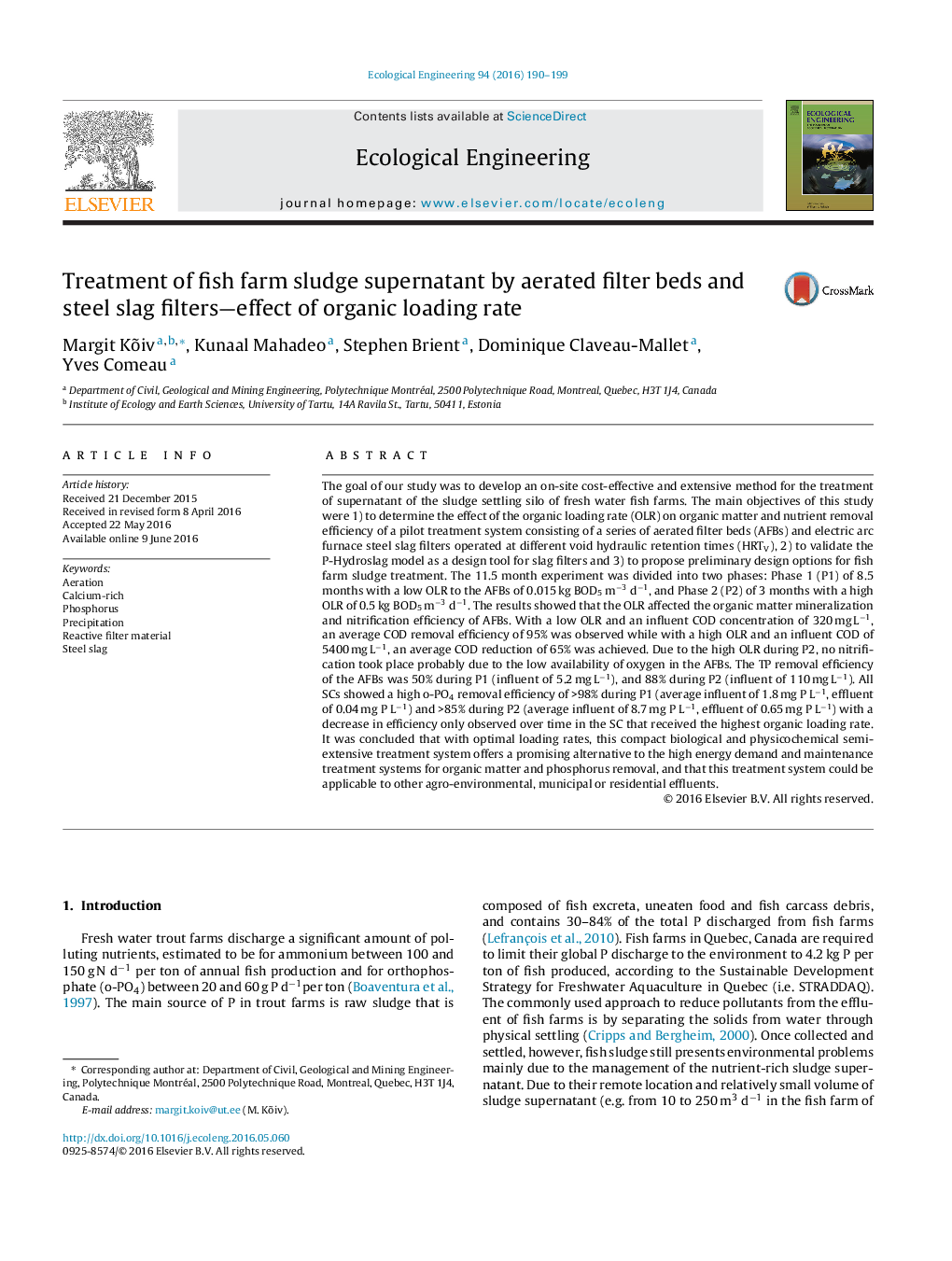| کد مقاله | کد نشریه | سال انتشار | مقاله انگلیسی | نسخه تمام متن |
|---|---|---|---|---|
| 4388546 | 1618005 | 2016 | 10 صفحه PDF | دانلود رایگان |
• Efficient removal of phosphorus and organic pollutants at low and high loading rates.
• Reactive calcium-rich steel slag is highly efficient for orthophosphate removal.
• First calibration of the P-Hydroslag model for improved design of steel slag filters.
• Preliminary design guidelines for fish farm wastewater treatment system.
The goal of our study was to develop an on-site cost-effective and extensive method for the treatment of supernatant of the sludge settling silo of fresh water fish farms. The main objectives of this study were 1) to determine the effect of the organic loading rate (OLR) on organic matter and nutrient removal efficiency of a pilot treatment system consisting of a series of aerated filter beds (AFBs) and electric arc furnace steel slag filters operated at different void hydraulic retention times (HRTV), 2) to validate the P-Hydroslag model as a design tool for slag filters and 3) to propose preliminary design options for fish farm sludge treatment. The 11.5 month experiment was divided into two phases: Phase 1 (P1) of 8.5 months with a low OLR to the AFBs of 0.015 kg BOD5 m−3 d−1, and Phase 2 (P2) of 3 months with a high OLR of 0.5 kg BOD5 m−3 d−1. The results showed that the OLR affected the organic matter mineralization and nitrification efficiency of AFBs. With a low OLR and an influent COD concentration of 320 mg L−1, an average COD removal efficiency of 95% was observed while with a high OLR and an influent COD of 5400 mg L−1, an average COD reduction of 65% was achieved. Due to the high OLR during P2, no nitrification took place probably due to the low availability of oxygen in the AFBs. The TP removal efficiency of the AFBs was 50% during P1 (influent of 5.2 mg L−1), and 88% during P2 (influent of 110 mg L−1). All SCs showed a high o-PO4 removal efficiency of >98% during P1 (average influent of 1.8 mg P L−1, effluent of 0.04 mg P L−1) and >85% during P2 (average influent of 8.7 mg P L−1, effluent of 0.65 mg P L−1) with a decrease in efficiency only observed over time in the SC that received the highest organic loading rate. It was concluded that with optimal loading rates, this compact biological and physicochemical semi-extensive treatment system offers a promising alternative to the high energy demand and maintenance treatment systems for organic matter and phosphorus removal, and that this treatment system could be applicable to other agro-environmental, municipal or residential effluents.
Figure optionsDownload as PowerPoint slide
Journal: Ecological Engineering - Volume 94, September 2016, Pages 190–199
